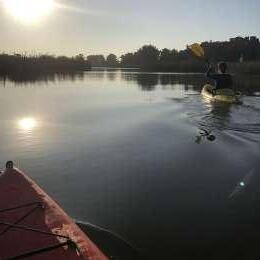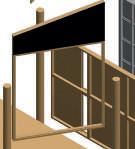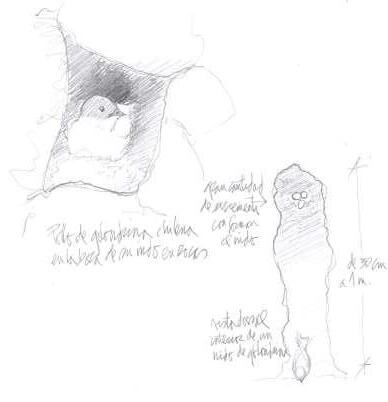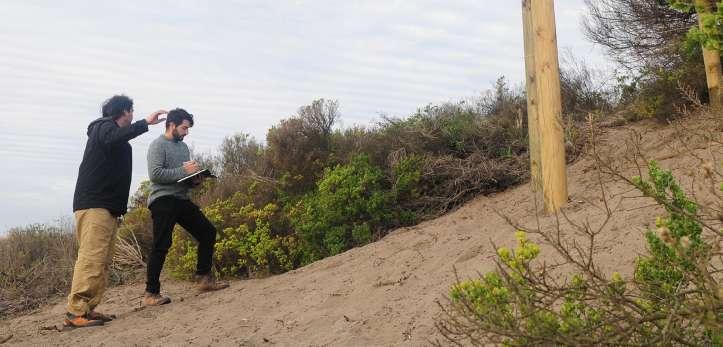ARCHITECTURE IN COHABITATION
The formal construction of the dialogue between humans and nature

Bruno Marambio Márquez, Architect - Naturalist
Eloísa Pizzagalli Andreani, Industrial Design
Sergo Elórtegui Francioli, Biologist - Naturalist
Sponsored by:

Project financed by Fondart Nacional, Call 2019, Valparaíso Region


Supported by:


We invite you to explore these pages, which describe the process and results of a research project that seeks to establish a relationship with nature through architecture.





The project “Architecture in Cohabitation” is a research work, financed by the Fondart Nacional, call 2019, Valparaíso Region, which addresses the question of how architecture happens in the territory and enters into a relationship with its components.
When architecture is found in a territory with such a characteristic nature and with such great environmental values as Chile, it becomes essential to think about the territory and the landscape. From this perspective we have adopted an ethical stance to create an architecture that dialogues with the natural environment from the observation of the natural entities that inhabit this particular territory. This, in order to be able to understand and comprehend these natural habits that allow us to think of an architecture that adapts to the environment, not through mimetics, rather recognising the formal value of the architecture itself, but which in its creative design process can incorporate and open a place for the continuity of the inhabiting of these other entities.
The purpose of the project is to investigate, through observation and the creation of architectural prototypes, the different ways of inhabiting nature. In particular, we have selected the case of small birds, mammals and bees that nest on rocky reefs, in Mediterranean scrubland and coastal dunes. This, understanding them also as dimensions that build the territory. The effort is to think creatively and deploy a built space that welcomes human beings, but that can also contain these other beings. That is to say, through a place that means an invitation to nature to relate to and cohabit with humans.




COHABITATING



“Cohabitation” is a complex concept that is usually linked to something that happens only among humans, referring to thinking and the awakening of a consciousness. However, advances in biology and neuroscience open up the concept of inhabiting and invite us to think on multiple levels of a “non-human inhabiting”.





The exploration of the living world carried out by the project opens up the concept of cohabitation and brings it back to the original questions: What are we humans in relation to all other living beings? Where does our way of inhabiting come from and what hope do we have of reunderstanding ourselves in relation to the natural world?


When a bird builds and chooses a place for its nest, it does not do so as a genetically pre-designed machine. It makes decisions about this twig or that twig, “measures without mathematics”, makes mistakes and gets it right, solves problems, stresses over the conquest of a mate or despairs if its chicks are in danger. The bird develops an attachment to its place and may return the following year. No two nests are alike, just as no two birds are alike, even if they are of the same species. Just as we visualise the place, the bird, for example, does so with its body. The sophistication of its behaviour does not require “human thinking” or equivalent for its nest to be an inhabited place.


Attending to non-human ways of dwelling puts us on an equal footing with all other living things, and more importantly, confronts us with the problem of how to shape inhabiting together, “cohabiting”.
 A
A. Naturalistic drawing.
B, C, D, E. O bservation trips, study and work days.
A
A. Naturalistic drawing.
B, C, D, E. O bservation trips, study and work days.
THE CABINET





A proposal to live together.

We have all found in our house an insect, a spider, or a bat coming out of an opening in the ceiling. Our architecture sometimes results in spaces for other organisms. These encounters can even be problematic.


But... what if from the beginning we also think of architecture from the needs of these others? An architecture that is an invitation to cohabitation, where humans and non-humans do not avoid each other, but collaborate in mutual well-being.















We thought of the cabinet after observing the “rocky reefs” that appear on the coasts of central Chile. Between Los Molles and Valparaíso, these rocky elevations are home to plants, birds, mammals and arthropods, like real biological islands. The cabinet shows the structures for the different organisms.




THE PLACE




The cabinet is situated on the dunes of Ritoque, in the Open City of Amereida, Quintero.

















Its placement does not interrupt the movement of the sands coming from the sea, and it rises to the horizon with its gaze towards the Mantagua Wetland, a priority site for the conservation of birds and coastal fauna.














THE DESTINATION
The project is based on the idea of proposing and creating an interior to receive the naturalist’s work, in which a couple of researchers will be able to live for a few days.




It will be a space destined to receive botanists, entomologists, ornithologists, geologists and artists whose work is to deepen the knowledge of the natural phenomena of the Mediterranean coast of central Chile.

It will contain the “Open City Herbarium” which preserves botanical samples of all the plant species of the Ritoque Coast and cartographic archives of the area.




 A. Naturalistic drawing.
B, C, D, E. Photos of naturalist work.
F, G, H, I, J. Photos of the prototype model.
A. Naturalistic drawing.
B, C, D, E. Photos of naturalist work.
F, G, H, I, J. Photos of the prototype model.














































We thank the Ministry of Culture, Arts and Heritage of the Government of Chile, and the National Fund for Cultural Development and the Arts (FONDART) 2019 for supporting this initiative.
To Concón Maderas Impregnadas in the person of Rodolfo Contardo for his generous sponsorship of the project and particular interest in the topic and subject of our work.
To the Mantagua School in Quintero and its director Magaly Valencia, and to the Sagrada Familia School in Reñaca and its director Carolina Sheward for being part of this cultural initiative that was also pedagogical. To all the children and young people who participated in the different moments of the project, bringing things to life with their records, games and questions. To the 2019 Science Workshop for their hard work in raising the project’s work table.
To the Natural History Museum of Valparaíso, its former director Loredana Rosso, its director Sergio Quiroz, and its advisors Juan Pablo Cruz and Gabriela Carmona for the hospitality with which they received the final sample, and for all their technical and logistical collaboration for its success.
To the BIOGEOART ANID PIA SOC 180040 Ring Project of the PUCV in the person of its director Andrés Moreira, and to the researchers Leticia Arancibia, Juan Carlos Jeldes and Pablo Mansilla for crossing paths in search of new paradigms in cohabitation.
To the entire Andes Workshop collective and in the person of Cazú Zegers, for being part of the germinal ideas of this project.
To the School of Architecture and Design of the PUCV for their support in the reflective matters of the project, and to the Open City of Amereida in the person of its president Andrés Garcés for supporting the development of the work and the construction of the prototype.
To the Fondart Nacional de Creación “La Danza del Paisaje” Folio 481138 in the person of Francisca Sazie and the dancer Francisca Silva for being part of the reflection on the body of ideas about cohabitation and soundscapes.
To Hermann Manríquez, Gastón Carvallo, Rodrigo Sánchez, Ariel Leiva, Juan Carlos Torres and all the researchers who welcomed us and took the time to talk about this luminous subject of inhabiting with other non-humans.
To Valentina Lucero, Camila Croharé, Macarena Márquez, Alen Silva, Benjamín Erazo, Benjamín Marambio and Valentina Muñoz for their beautiful work in raising the dissemination and exhibition dimension of the project.
And finally, we would like to thank all our volunteer friends who put all their ingenuity, courage and striated muscles at the disposal of the project to raise the huge pillars that support the cabinet for cohabitation. To Pedro Drapela, Yassna Constanzo, Cristobal González, Leonardo Aravena, Marinella Caniggia, Silvana Amaro, Fernanda Torres, Eber Sáez, Max Woods and Rodrigo Sheward on representation of Grupo Talca.
